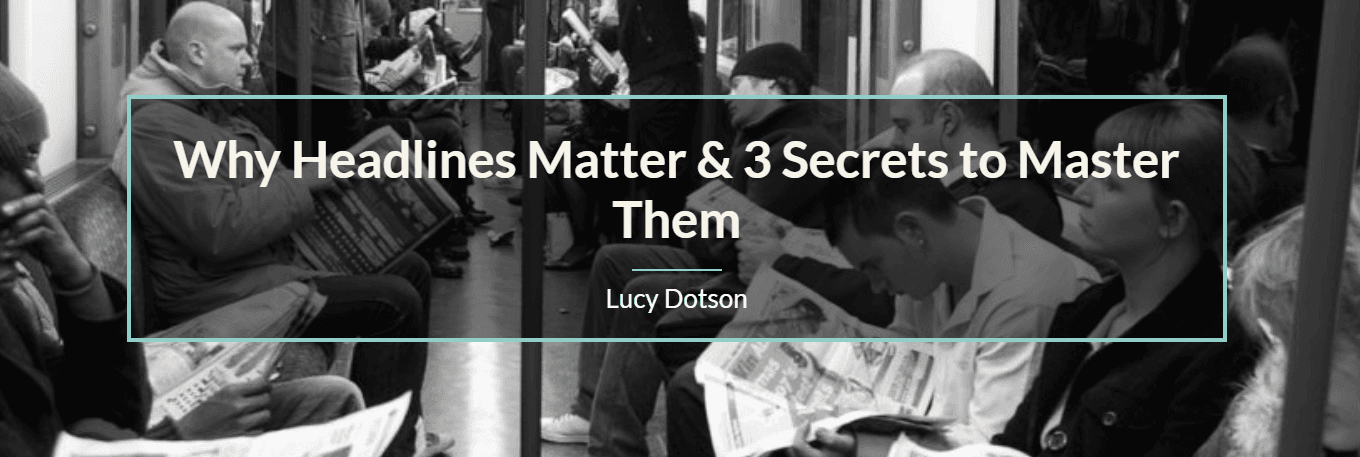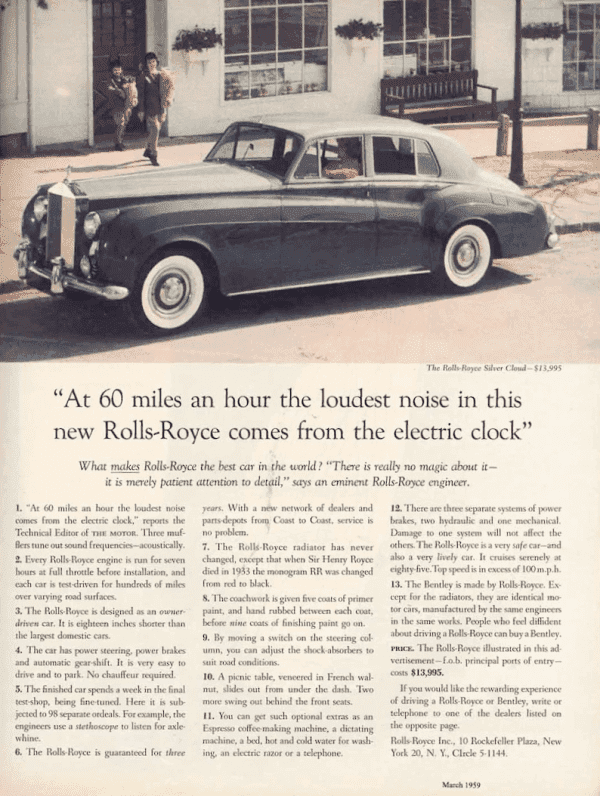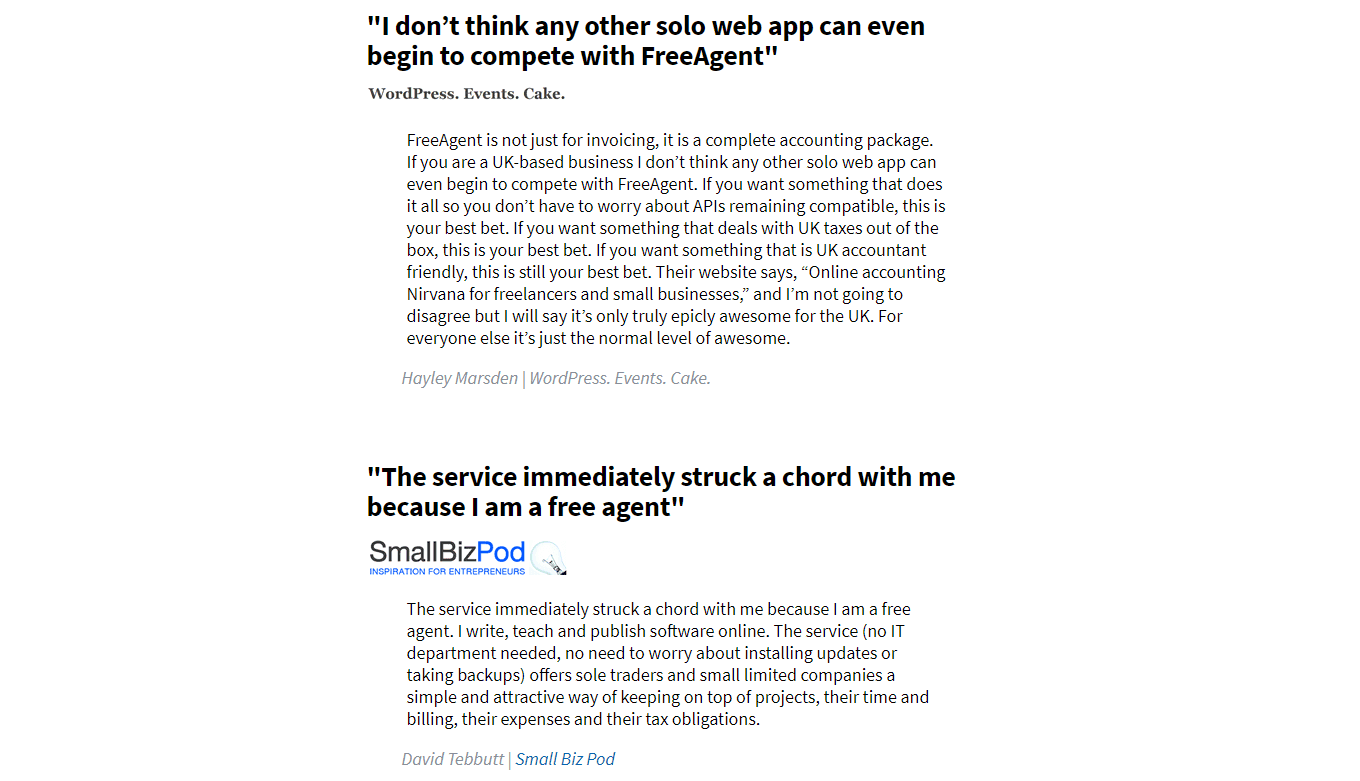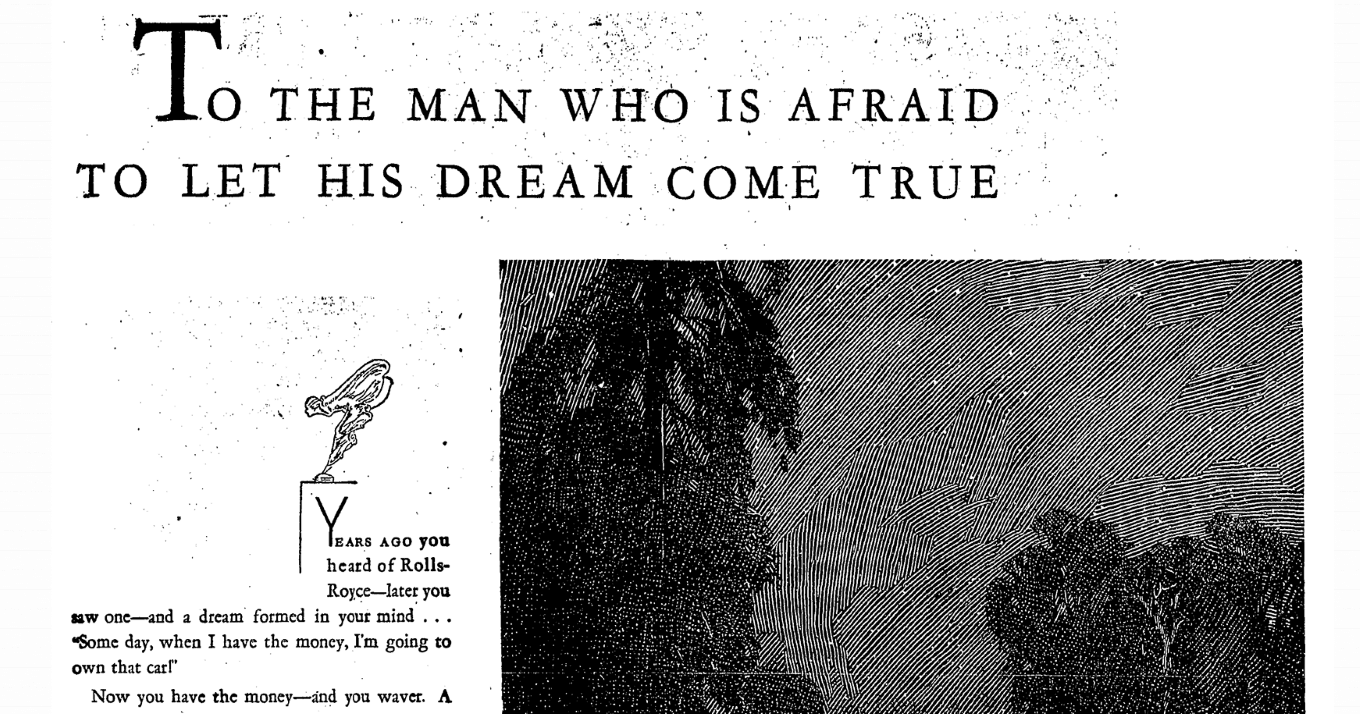You’d think that a headline’s short length makes it easy to write, but I bet you know from experience how tricky it can be to craft one. Whether you consider yourself a marketer, blogger, journalist, or copywriter, we — as writers — can all relate to this challenge.
Fortunately, we can tackle many writing obstacles when we have frameworks and examples to reference. By learning how to categorize a headline and looking at inspiring examples, it becomes easier to create a headline that lets your writing shine.
In this blog post, we’ll explore 17 popular headline types and look at successful examples of each.
Take These Catchy Headline Resources
Before we chat about the different types of headlines out there, download this bundle of headline resources to up your writing game! This bundle includes:
- 180 Emotional Words: Using emotional words in your headline is a surefire way to multiply your traffic engagement
- A Catchy Blog Title Infographic: This is a great visual that includes 500 attention-grabbing words, 100 headline templates, and more, so you can boost your traffic by 438%.
- An Editorial Calendar Template: What better way to organize your content, collaborate with your team, and monitor your deadlines than a template that we’ve made especially for you
Recommended: Catchy Headline Generator
Let’s Talk About Headline Types
Now that you have a great, downloadable resource, let’s get down to the nitty gritty and walk through some need-to-know headline types. These headline types are the ones you’ll see used most commonly and — if used correctly — most effectively.
“How-To” Headlines
These headlines include the phrase “how-to” and label a piece that explains, well, how to do something. With this headline format, you can summarize exactly what your article will teach someone. You’ll see this type of headline leading instructional writing.
Of course, when you use a “how-to” headline, you’ll want to use it to title a piece that follows through with your promise. For example, if you use the headline “How to Build a Boat”, you should include at least a basic overview of how to construct a boat.
You can add details to your “how-to” headline to give your audience clear expectations about your piece. Check out one of NPR’s training articles headlines:
When you read this headline, you know that you’ll get five tips from the text with accompanying examples. The “how-to” half of the title before the colon uses adjectives, like “great” and “engaged”, to maintain a positive tone. Meanwhile, the “5 tips (and examples)” after the colon sets the expectation that the article will have five pieces of advice and examples that illustrate them.
“Why” Headlines
Just as “how-to” headlines title writing that explains how to do something, “why” headlines lead into content that describes the reason behind something, and they can highlight an explanatory or opinion piece. For example, “Why Frogs Are Amphibious” would explain something, while “Why the Rainforest Matters” would present an argument.
The MarketSmiths blog post Why Headlines Matter & 3 Secrets to Master Them clearly outlines the focus of the piece: an argument for why headlines matter and three tips for creating high-quality headlines.

MarketSmiths’ title stays concise with just eight words that communicate the article’s two distinct goals.
Question Headlines
As the name implies, question headlines pose a question to the reader. They sometimes overlap with “how-to” and “why” headlines, and they follow a similar principle: make sure to answer the question you bring up through your title.
Copyblogger points out that you should strive to write question headlines that you can’t answer with a simple “yes” or “no”. After all, if your audience feels like they can answer the question without reading your article, why would they need to read it? As Copyblogger explains, you can ask “Are Your Weeds Out of Control?” — a yes/no question — or “What’s the Secret to Keeping Your Weeds at Bay (Year After Year)?”, which provides a selling point with an open-ended question.
In possibly the most self-aware example on this list, NPR poses the question, Should you write a question headline? It depends…

Generally, if you’re asking whether you should utilize a question headline, you’ll need more than a “yes” or “no”. The extra phrase “It depends…” in this example headline offers some additional context that entices the reader to find out why the answer can depend. Those last two words encourage further questions that the reader will want the author to answer.
Direct Response Headlines
A direct response headline follows the principles of direct response copywriting. To understand the first concept, you’ll have to understand the second.
According to HubSpot, direct response copywriting is copywriting that demands a direct action — such as a purchase, sign-up, or download. It involves extensive research, A/B testing, and knowledge of human psychology with the goal of direct response copywriting being to encourage a sale — right now.
As one of the most results-focused headline types out there, direct response headlines often appear on advertisements and online sales pages. You’ll see them in copy where every letter represents money.
Our example of a direct response headline comes from David Ogilvy, an icon in the copywriting scene. ReferralCandy shared what he considered the best headline he wrote:

Ogilvy attributes the headline’s success to giving only the facts — “no adjectives, no ‘gracious living.’”
News Headlines
A news headline introduces a news article to a reader. It has a similar objective to content marketing headlines — grab the audience’s attention while describing the subject matter — but requires a straightforward approach. As we discussed in our blog post on inspiring headline examples, a news headline should be accurate, direct, and uncluttered.
After all, in today’s competitive media environment, you need to convince your audience that your outlet and issue matter more than the rest.
Of course, you can still flex your creative muscles while writing a news headline to maximize its effectiveness. Poynter has some, ahem, pointers for writing a strong headline. You can integrate more specific words, emotional elements, and concise wording to get your message across.
For example, the AP News headline example, “Puffin stuff: Herring rules could boost funny-looking bird”, adds a touch of playfulness to an informative statement. Poynter’s tips advised against using puns in a headline, but this example makes an exception to the rule by sticking to lighthearted content and getting the article’s main idea across.

Plus, by using the word “puffin” right at the beginning of the headline, the author could add a little more cheekiness with the phrase “funny-looking bird” at the end.
Kicker Headlines
A kicker headline is another journalism headline that you’ll often see in the print edition of a newspaper. According to Merriam-Webster, a kicker goes near an article’s primary headline and provides context or provokes interest. A newspaper might use a kicker when a single headline needs background information or an extra creative touch.
You can see a kicker in action in this digital version of a Washington Post print article:

“For carmakers of the future, a bumpy road ahead — Push for all-electric vehicles marks the industry’s biggest turning point in a century.”
While the main headline hints at a challenge in the automobile industry, the kicker explains the nature of the issue.
Ad Headlines
Ads began in print; now, they make up a large part of the digital experience. While we see most of today’s ad headlines on the screen instead of print, they still demand a high level of creativity and audience knowledge to properly pull it off.
Modern advertisements appear on printed media, signage, websites, and social media, and each channel has different considerations for design and copy. However, the same underlying principles apply — draw the reader’s interest. In many cases, an ad copywriter and designer will work together to create words and imagery that build on each other.
As highlighted in Awario’s Oatly case study, Twitter user, @benpluswords, posted a picture of one of the brand’s painted mural ads:

It reads, “We made this mural instead of an Instagram post. Hope a barista walks by and sees it.”
Oatly built a reputation for itself as a brand that isn’t afraid of poking fun of itself and advertising’s current best practices. The headline, “We made this mural instead of an Instagram post”, acknowledges that the ad is taking a risk while pointing out how overused Instagram can be in Oatly’s industry.
Command Headlines
Command headlines directly ask the reader to take an action. They appear in places like web copy, digital ads, and print ads.
According to Copyblogger, the term “command headline” comes from Bob Bly’s The Copywriter’s Handbook. Bly’s format starts with a strong action word that defines what the audience should do in response to your copy.
To raise awareness about its Chewy Gives Back campaign wishlists, Chewy has a banner with the headline “Give Back with Wish List”. In five words, the headline tells you what to do and how you can do it. If you pay close attention, you’ll also see that the subtitle and call-to-action use a command format to urge action from the reader.

Testimonial Headlines
A testimonial headline uses a testimonial quote to lead the reader into your content. It can serve as a title for a testimonial page, but you might also find this headline type on an ad or landing page. Like a full testimonial, a testimonial headline brings in the audience by providing the opinion of another customer they can relate to.
FreeAgent’s press reviews page has plenty of examples of testimonial headlines to help you get the idea. The reviews they feature have testimonial headlines pulled right from their respective articles. Some of the headlines they use to lead into each review snippet include “Every home-based freelancer’s dream” and “I don’t think any other solo web app can even begin to compete with FreeAgent”.

The reviews included in the list come from freelancers and expert reviewers alike, leading to a mix of relatable and trustworthy testimonial headlines.
List Headlines
Listicles (a.k.a. articles made up of a list of ideas, tips, or instructions) are an increasingly popular form of content on the internet. That being said, when you write a list headline for one of these pieces, you want it to make an impression. As we mentioned in our list of headline formulas and templates, you can use templates, like the following, to create a list headline:
- X Ways to Do (Action)
- X Things to Consider When (Action)
- X Rules to Follow When You’re (Action)
Whatever your list covers, make sure to clearly outline the number of items in your article and the list’s focus in your headline.
Good On You, an app that rates retailers based on sustainable practices, posted “9 Sustainable Fashion Statistics and Quotes to Brighten Your Day” on their blog earlier this year. In addition to defining what and how many items the list includes, the headline also shares the article’s purpose — “To Brighten Your Day”.

This title concisely tells us the article’s main concepts and focus — not to mention that its positive energy goes well with the website’s H1 headline font.
Inspirational Headlines
Inspirational headlines are a type of emotional headline that use inspiration to sell a product or frame an uplifting story. They tend to focus on positive language that evokes feelings of hope, accomplishment, or self-improvement. You can find inspirational headlines in website copy, ad copy, and journalistic writing.
Very Good Copy shares a classic example of an inspirational headline in a post about headline writing techniques. A vintage Rolls Royce ad leads with “To The Man Who Is Afraid To Let His Dream Come True”. The copy inspires the reader to follow their dreams and buy the luxury car they’ve always wanted.
In a more journalistic example, Upworthy published the piece “Meet the people infusing their communities with love and support when it’s needed most”. This headline juxtaposes a difficult situation (“when it’s needed most”) with uplifting behavior (“infusing their communities with love and support”) to set the story’s tone.
Belief Headlines
Belief headlines go in-depth in the emotional headline writing process by tapping into people’s beliefs and convictions. To write a belief headline, you’ll have to know your audience through and through. These titles dive into the reader’s assumptions about the world to put the content after it on their level.
Writers in content marketing and copywriting often use emotional and belief headlines for their potential to attract readers, but journalists can use them as well. Belief headlines come up in advertising, website copy, and social media copy.
In a list of emotion-based headlines, Copyblogger included an example that could also work as a belief headline. The first example, “Learn How to Stand Up to Your Boss (and Force Him to See What You’re Really Worth)” works off the reader’s belief that their boss isn’t treating them the way they deserve. This title also reaffirms that belief with the phrase “What You’re Really Worth”.

Confrontational/Controversial Headlines
Many marketing, content writing, and journalism concepts encourage writers to create content that aligns with the reader’s opinions and feelings. Even if your reader might not agree with you, you’re still trying to find common ground.
Confrontational and controversial headlines have the opposite goal — challenge the reader’s knowledge and values to grab their attention. They can lead short-form and long-form content, but you’ll often find them in long-form content, like blogs and journalism articles, where the writer has plenty of room to explain their point.
As Ryan Law at Animalz puts it, “Information alone is rarely valuable… Instead, it’s the expert interpretation of that information that matters.” When you take a stance on a topic, you differentiate yourself from the competition. Of course, make sure you have the expertise needed to give your reader an informed opinion of your subject before trying this approach.
The Atlantic article, “This Article Won’t Change Your Mind”, has a headline that subverts the audience’s expectations while demonstrating its author’s point. As readers, we go into content with the assumption that it aims to change our opinions, so it can be eye-opening to read a title that rejects that idea from the start.

You’ll also see a lot of headline advice that tells you to stick to a positive tone, but this title throws that convention out the window. That rejection of norms gets your attention pretty quickly.
“Best” Headlines
“Best” headlines often overlap with list headlines and lead into articles ranking certain items above the rest. They don’t necessarily have to include the number of subjects covered in the article. For example, you can have “The Best Restaurants in Your City” with a list that constantly changes in number or “The Best Restaurant in Your City” that highlights a single restaurant.
Indeed’s Career Guide has an article titled “10 Best Skills to Include on a Resume (With Examples)” that you can reference as an example of this headline format. The headline sets the article apart from potential competitors by highlighting the fact that it has examples.

Number/Statistic Headlines
When you need to make a strong point with your headline, consider using a number or statistic. Whether you write as a journalist or marketer, some pieces of writing provide the opportunity to support your point right in the headline with a figure. Number headlines lead into content in advertising, digital content, and journalism — including short-form and long-form content.
If you plan on using a number or stat in your headline, look for one that has a significant impact. For example, a 53% increase in revenue will turn more heads than a 3% increase.
Let’s look at a CoSchedule blog post to see how numbers can make a headline more appealing. The title, “Master Content Refreshing and Republishing in 4 Simple Steps (And Save 80% More Time)”, turns a summary into a quantifiable benefit — save four-fifths of your time by following the steps in the article.

It demonstrates how you can add a quick figure in parentheses to turn a good headline into a great one.
Versus Headlines
A versus headline pits two products or items against each other to help the reader make a comparison. You might discover them heading shopping guides or educational articles — usually not short-form content.
This type of headline allows for easy searching — on an SEO and human level — by outlining which two subjects the article will compare.
In an example from Zapier, “Social Media Management Tools Showdown: Hootsuite vs. Buffer”, the title gets a little creative with the lead-in “Social Media Management Tools Showdown”. Once the headline sets the article’s purpose with a fun hook, it introduces the competitors: Hootsuite and Buffer.

This title also shows the beauty of versus headlines. With the formula “(subject 1) vs. (subject 2)”, you understand that the article compares Hootsuite and Buffer when you give it a quick scan.
Clickbait Headlines
Clickbait headlines have the sole purpose of getting as many clicks as possible — often, at any cost. A clickbait title can technically be high-quality, but the term has built such a negative connotation over the years that most folks usually refer to low-quality headlines when they talk about clickbait.
Most clickbait headlines strongly appeal to emotion to encourage clicks and sharing, and sometimes they don’t align with the actual content that follows them. An infamous example of a clickbait title is the “one weird trick” headline that you might see in the ad grids at the bottom of certain website pages. They’ve become iconic enough to have their own Wikipedia article and internet memes.
“Lose one inch of belly fat per week with this one weird trick,” reads the example on the Wikipedia page. Some examples also had a “Doctors hate him!” thrown in at the beginning for good measure.
Long story short, clickbait titles hype up a concept with a promise — then fail to deliver on it. Instead of writing a clickbait headline, you want to use time-tested best practices for creating engaging headlines.
How to Test Your Headline With Headline Analyzer Studio
Now that you have some of the most common headline types down, it’s time to try making some of your own. The CoSchedule Headline Analyzer Studio can help you write and test headlines with structure, emotional impact, and readability in mind.

After making a free account, enter your headline into the box to get a score based on factors like word/character count, word strength, sentiment, and reading level that affect a headline’s performance. You can even edit your headline in the analyzer and run it again to see if you can improve it.
Achieve Your Content Goals With a Well-Crafted Headline
With new knowledge of headline frameworks under your belt, where do you go from here? Let’s try getting a little more granular with 64 headline writing techniques and 10 AP Style best practices to try with your headlines.
Honestly, like any other aspect of writing and content marketing, good headline crafting takes practice. Keep writing and testing until you feel comfortable, then write and test some more for good measure. You’ve got this.


